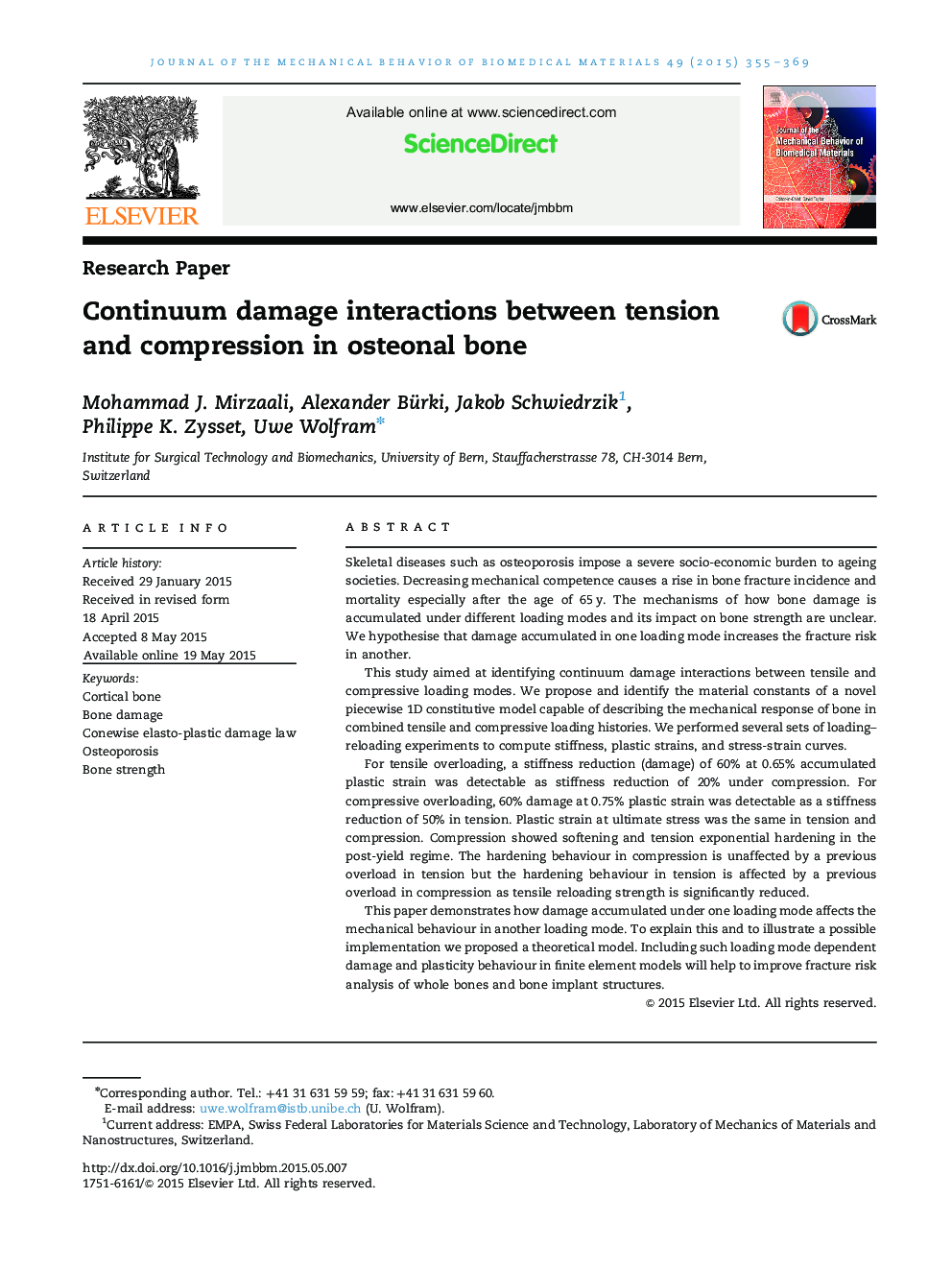| Article ID | Journal | Published Year | Pages | File Type |
|---|---|---|---|---|
| 810609 | Journal of the Mechanical Behavior of Biomedical Materials | 2015 | 15 Pages |
•Stress interaction experiments to reveal loading mode dependence of damage.•Stress interaction in loading – reloading scenarios.•Novel 1D constitutive model to identify mechanical behaviour.•Tensile overloading has minor impact on compressive reloading.•Compressive overloading has major impact on tensile reloading.•Results help to understand impact of stress interaction on bone fracture risk.
Skeletal diseases such as osteoporosis impose a severe socio-economic burden to ageing societies. Decreasing mechanical competence causes a rise in bone fracture incidence and mortality especially after the age of 65 y. The mechanisms of how bone damage is accumulated under different loading modes and its impact on bone strength are unclear. We hypothesise that damage accumulated in one loading mode increases the fracture risk in another.This study aimed at identifying continuum damage interactions between tensile and compressive loading modes. We propose and identify the material constants of a novel piecewise 1D constitutive model capable of describing the mechanical response of bone in combined tensile and compressive loading histories. We performed several sets of loading–reloading experiments to compute stiffness, plastic strains, and stress-strain curves.For tensile overloading, a stiffness reduction (damage) of 60% at 0.65% accumulated plastic strain was detectable as stiffness reduction of 20% under compression. For compressive overloading, 60% damage at 0.75% plastic strain was detectable as a stiffness reduction of 50% in tension. Plastic strain at ultimate stress was the same in tension and compression. Compression showed softening and tension exponential hardening in the post-yield regime. The hardening behaviour in compression is unaffected by a previous overload in tension but the hardening behaviour in tension is affected by a previous overload in compression as tensile reloading strength is significantly reduced.This paper demonstrates how damage accumulated under one loading mode affects the mechanical behaviour in another loading mode. To explain this and to illustrate a possible implementation we proposed a theoretical model. Including such loading mode dependent damage and plasticity behaviour in finite element models will help to improve fracture risk analysis of whole bones and bone implant structures.
Graphical abstractFigure optionsDownload full-size imageDownload high-quality image (293 K)Download as PowerPoint slide
